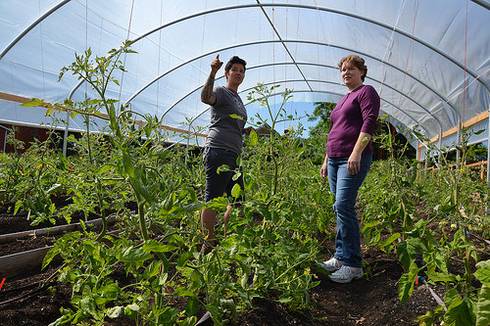Apr 18, 2018High tunnels create microclimates for specialty crops
High tunnels are simply polyethylene plastic secured to steel hoops over crops.
They mimic a lot of the advantages of a traditional greenhouse but at a fraction of the cost. The issue for growers, Lang said, is that even at that reduced cost it is a significant investment for many growers.
“Growers see the clear benefits as soon as we begin talking to them about it, but they’re just not sure if they can make it work economically.”
That’s why, Lang said, it’s important to not just learn the benefits of high tunnels, but whether it makes sense for your particular growing situation and market, possible intended and unintended ramifications and also how to maximize your return on investment.
After the general session in the morning, there will be three additional sessions covering high tunnel strategies specific to berry growers, wine grape growers and vegetable growers.
“Changing rainfall affects disease and irrigation; changing the light environment affects disease and potential insects – it all has a cascading effect,” Lang said.
And those cascading effects can have a big impact on profits for many growers, according to Lang.
“We’re going to give you a broader understanding, review cost-benefit analysis and help you understand if it’s right for you,” Lang said.
MSU Agriculture Innovation Day: Focus on Fruit and Vegetable Technologies, 8:30 a.m.-5 p.m. June 28 at the MSU Southwest Research and Extension Center in Benton Harbor, Michigan, offers a variety of fruit, vegetable and grape growing technologies, including the latest information on pollinators and equipment. For detailed session descriptions, visit http://www.canr.msu.edu/msu_agriculture_innovation_day/ or contact Ron Bates at [email protected].
– Sean Corp, Michigan State University
Photo above: Urban farmer Stacey Givens and Kim Galland from USDA’s Natural Resources Conservation Service talk about the benefits of high tunnel at the Side Yard Farm in Portland, Oregon. Photo: USDA















